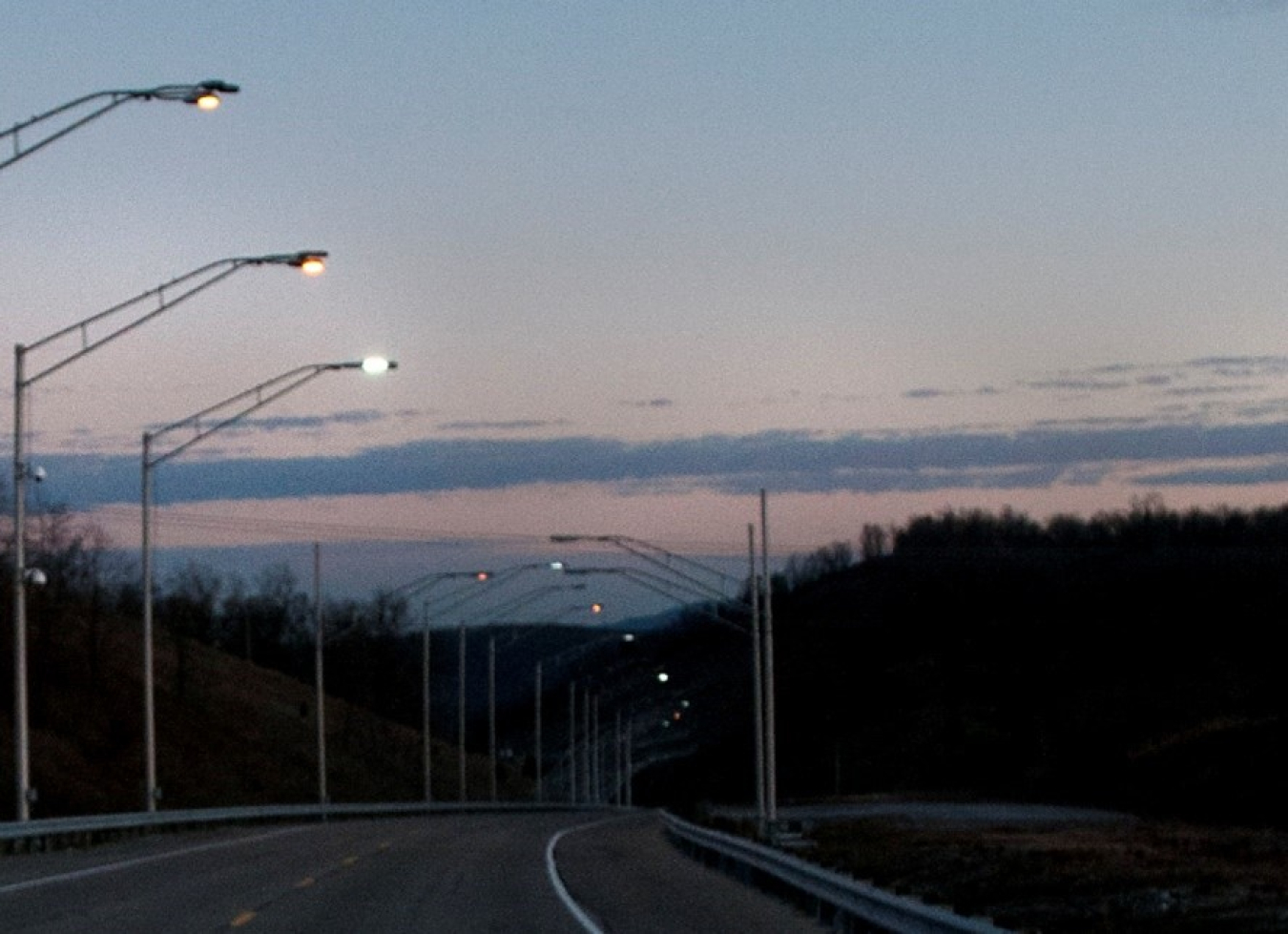
Virginia Tech Transportation Institute’s “Smart Road.”
Studies have shown a strong link between human light exposure and melatonin levels, which in turn impact sleep, alertness, and general health. The physiological effects of light exposure have been shown to be highly dependent on dosage, spectrum, and timing, but the impact of outdoor lighting on melatonin levels has never been measured in a naturalistic lighting environment until now. With DOE funding, researchers at Virginia Tech Transportation Institute (VTTI), in a partnership with Thomas Jefferson University, have studied the effects of outdoor lighting on melatonin levels in realistic roadway environments. The findings, which are expected to have an immediate and significant impact on the industry, are awaiting publication in several peer-reviewed journals.
The VTTI researchers measured the physiological effects of lighting on drivers, pedestrians, and occupants of a roadside cabin at VTTI’s “Smart Road” facility. Five different light sources, each with a different spectral content, were evaluated in terms of the neuroendocrine phototransduction of the intrinsically photosensitive retinal ganglion cell (ipRGC) system.
Blood and saliva samples were taken and analyzed to see how the roadway lighting affected the subjects’ melatonin secretion, as a measure of the physiological impact of roadway lighting with differing amounts of blue light content. Subjects wore a miniature dosimeter to estimate the lighting dosage. Statistical modeling was used to link the melatonin response to the lighting configuration. In addition, all 29 subjects were evaluated on tasks specific to their category (object-detection for drivers, gap-acceptance of oncoming traffic for pedestrians, and sleep activity for cabin occupants).
This research can help to answer questions such as which spectra of light are safest for roadway applications and how the various spectra can impact health. The results of the study will help enable improved guidance as to the optimum light spectra for roadway use. The results will also inform the public on the health impacts of outdoor lighting – not just on drivers, but also on pedestrians and individuals with bedrooms exposed to street lighting. (September 2020)
Return to Research Highlights.

